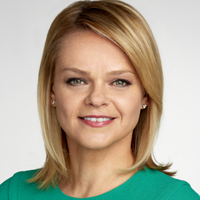NTF 2020 | Local TV News’ Longer-Term Future Needs More Relevance And Inclusion
After a year of rapid, pandemic-compelled innovation, TV news’ lasting future will lie in how effectively it’s able to hold on to the relevance and usefulness it has shown viewers.
It will also need to build upon a commitment to inclusion inspired by Black Lives Matter protests this year and make more targeted efforts to learn more about its audience, namely through initiatives like membership programs, a panel of industry leaders said Dec. 18 while tackling the notion of “News 2022: The Reshaping of Programming, Technology and Audience” at TVNewsCheck’s NewsTECHForum.

Frank Mungeam
Technologically, broadcasters went through “10 years of transformation in 10 months,” said Frank Mungeam, the Local Media Association’s chief innovation officer.
A lot of that massive change has been for the better, said Fred Fourcher, Bitcentral founder and CEO, including doubling the amount of content created and shared between stations in a group.
Lora Dennis, SVP digital at NBCUniversal Owned Television Stations, said conversations in the wake of the George Floyd murder led the broadcaster to “reimagine who we interview, how we describe what’s happening.”
The change has been powerful and empowering for the journalists who now feel like they can cover stories differently, she said.

David Friend
“We have to get past the usual suspects,” David Friend, SVP of news at CBS Television Stations, said. “The information we can handle. It’s about the telling of the story and the voices in those stories.”
And that change can start with news planning meetings, which Friend said now may have between 40 and 60 participants from various departments. The contributions from people of different perspectives and different life experiences has “made the editorial process so much richer.”
Dennis said that it’s important not just to have diversity in the planning meetings but at the decisionmaking level as well.
With the coverage of the pandemic, the George Floyd murder, the wildfires and the election, “we’ve been bombarding the audience with news and info over the last 10 months,” Friend said. “It’s incumbent on news departments not just to serve facts, but relevance, perspective and helpfulness.”

Lora Dennis

Seth Geiger
Dennis said journalists must adapt their coverage so stories remain relevant to the readers. Just in the past week, she said, there was a nor’easter, but because people aren’t driving or worried about school closures due to COVID, the way the storm was reported still had to be relevant to viewers.
At the same time, Seth Geiger, president and co-founder of SmithGeiger, said audiences are responding approvingly to changes broadcasters have made, and broadcasters seem to be connecting with viewers on the stresses of life during a pandemic.
“We’re in this together,” Geiger said. “We’re hearing things we’ve never heard from audiences,” such as news being helpful rather than just relevant, and anchors are being more empathetic.

Catherine Badalamente
“Part of our job is to remind our community of the humanity that binds us all together,” said Catherine Badalamente, SVP and chief innovation officer of the Graham Media Group. “We have to tell the stories that remind people that there’s a lot more that binds us together than there is that separates us.”
Use of local news sources spiked early in the pandemic, Geiger said. On March 9, about 72% of people were getting news from a local source, and by March 19, that number had jumped to 91%.
“Local news was by far and away the most trusted,” he said. And there was a further interesting dynamic, he said. “The more you used local, the more you trusted it, and the more you used social, the less you trusted it.”
Badalamente said membership programs can help broadcasters better understand their viewers. “We don’t know a lot about our audience, and we don’t have a lot of data about them,” she said.
Having that information would make it possible to create personal content experiences for viewers, she said, adding that feedback from the membership would make it possible to create a better product for the members and other viewers.
Membership has another selling point: the potential to bring in revenue, such as charging for access, she said.
Capturing revenues in the future will require a high-quality viewing experience wherever the viewer is, Fourcher said. That viewing experience must be “frictionless, so they embrace it,” he added.
While on-air is the reach platform, digital is the frequency platform, Geiger said. “Digital is not an appointment view, but it needs to become a habit, alongside the Facebooks and Goolges,” he added. “We have to do a better job of delivering real-time content.”
Read more NewsTECHForum 2020 coverage here.
































Comments (2)
[email protected] says:
December 21, 2020 at 10:22 am
Catherine Badalamente says, “Part of our job is to remind our community of the humanity that binds us all together. We have to tell the stories that remind people that there’s a lot more that binds us together than there is that separates us.” Well, is that so? And is that “part of our job” to make it seem so? There are vast income, education and lifestyle differences. There are huge problems and challenges. So be relevant. Local news viewers don’t really need to know you are their friend.
weneedhelpnow says:
December 22, 2020 at 8:08 am
Lefty snowflakes …. who write articles like this and then the little news snowflakes who read and listen to them are everything wrong with this country..And you wonder why viewership levels are at all-time lows and news people are thought of less than politicians with single-digit approval ratings..The news business is full of D- students and this proves it..What a joke you people are!!